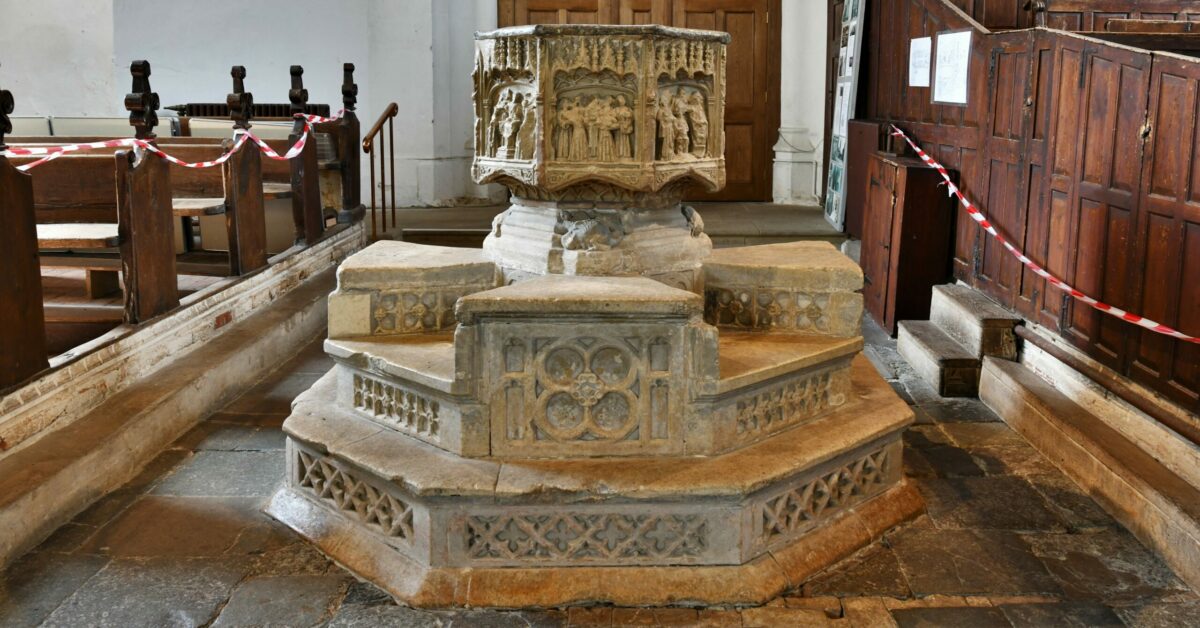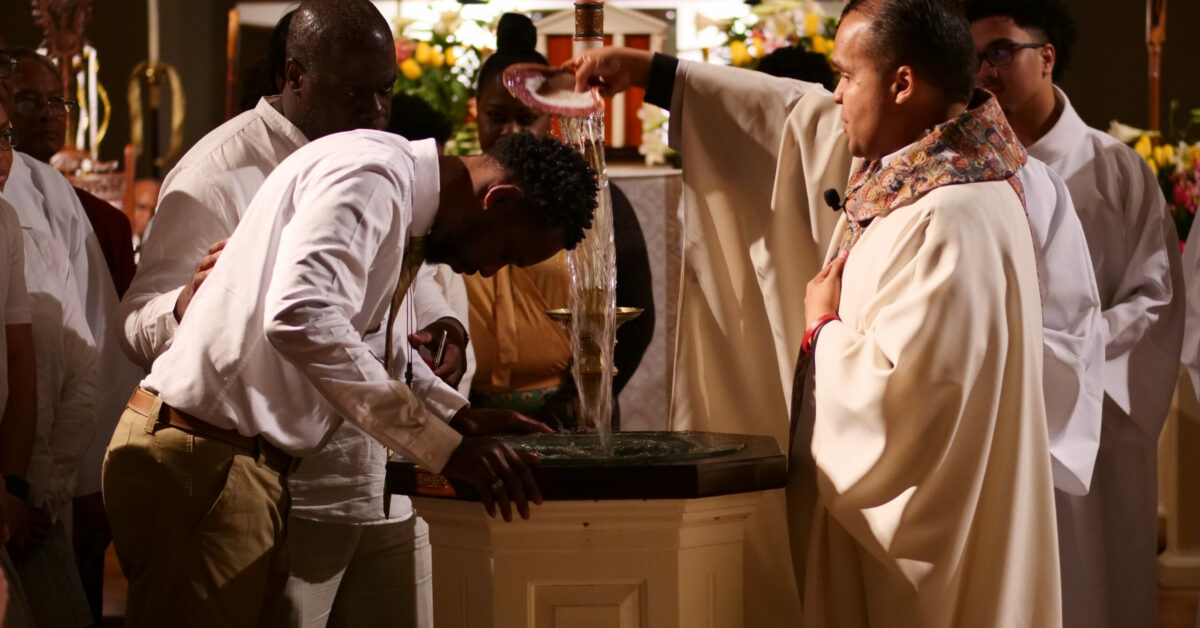Christian Initiation: Three Central Issues
In Rhoda’s last blog she highlighted the Paschal Mystery as unpacked in various themes by Kim Belcher in her essay “A Theology of Christian Initiation.” In this our final post on A Pastoral Theological Commentary on the Order of Christian Initiation of Adults (Chicago, Liturgy Training Publications), I take up Maxwell Johnson’s final essay in the volume, “Contemporary Issues in Christian Initiation” (189-204). I must be transparent about my receptivity to Johnson’s arguments. He was my teacher at Notre Dame. The three issues he highlights as contemporary challenges that still need to be addressed are all reflections of the implications of the Paschal Mystery as the predominant paradigm for Christian Initiation and baptismal living. These challenges all flow from Aidan Kavanagh, perhaps the foremost liturgical champion of the RCIA when it appeared, in a quote that Johnson provides at the end. There Kavanagh says that even in light of the monumental achievement of the RCIA, “there is much work to be done,” something which Johnson wholeheartedly affirms. He outlines that work through the following three issues:
- The Full Christian Initiation of Adults or the Conversion of Other Christian to Roman Catholicism?
- Infant Baptism or Infant Initiation in Light of the OCIA?
- Christian Initiation and the Liturgical Year
I’ll highlight these three issues as Johnson outlines them but highly recommend that you read this essay. It is simply required reading regarding the contemporary practice of Christian initiation.
Full Initiation of Adults or Conversion
Initially he notes the significant impact a full practice of Christian Initiation (Baptism, Chrismation-Confirmation, and Eucharist with a robust process of formation, ie. RCIA) has had on the Roman Catholic Church, and Protestant communions as well. Quoting Aidan Kavanagh, these changes “are not merely specific changes in liturgical rubrics, but a restored and unified vision of the Church” (189). As I tell students in my classes the catechumenate aims toward birthing lifelong disciples of the Lord Jesus, but it ultimately transforms a congregation’s self-understanding of its life together. The restored catechumenate aims at initiating the unbaptized into life in the body of Christ. But typically in modern practice, both in Roman Catholic and Protestant congregations, the unbaptized and those already baptized but seeking to join this particular communion are included in the same process. Johnson seriously laments this intermingling because of the massive confusion it creates. Fundamental to that confusion is the notion that this is not focused on making disciples into the one holy catholic church from the unbaptized but on the conversion of those from other Christian traditions into being Roman Catholic (or Lutheran or Episcopalian). Johnson focuses on the ritual confusion, that is, receiving the fully baptized into communion at the Easter Vigil/the same time as the unbaptized and using the rite of confirmation as the means of reception into full communion. I agree on both points. The use of confirmation raises the issue of what confirmation is, and Johnson clearly indicates that it is for symbolically representing the gift of the Spirit in Christian Initiation with baptism, not at some other time. Johnson does not address the reality that it is unrealistic for congregations to offer two catechetical programs as part of the catechumenate, one for the unbaptized and one for entering into communion. But that doesn’t mean that congregations shouldn’t ritually distinguish these two groups. As he suggests, those already baptized should be received into communion on a different Sunday (perhaps from my perspective Pentecost) and the ritual mode of reception should be distinct from those utilized in the catechumenate.
Infant Baptism or Infant Initiation?
The primary issue here is the difference between initiatory practices for adults versus infants. Not since the days of the early church have infants been received with a full initiation process: baptism, anointing, and eucharist. Johnson provides the helpful taxonomy of this question in the Roman Catholic church as expressed through the M.A. Thesis of Paul X.F. Covino. As Johnson indicates, “the initiation unity school”—advocating for full rites of initiation for infants—alongside the “environmentalist school” that takes seriously the responsibilities of the Christian community in nurturing lifelong discipleship have come to predominate in Roman Catholic circles. This of course means advocacy for baptizing infants, confirming them (laying on hands and anointing) immediately, and also immediately incorporating them into the eucharistic community. As Rome engages this question it will also lead Protestants to grapple with it. Some Lutherans in the ELCA have discussed this and taken up a complete initiation process for Lutherans. It continues to be a conversation that LCMS Lutherans appear unwilling to have.
Christian Initiation and the Liturgical Year
While Johnson indicates that “the Paschal Mystery of Christ’s death and resurrection has emerged as the key image and central metaphor by which all Christian life and liturgy are to be interpreted and understood” (199), he also contends convincingly that Easter is not the only feast appropriate for the rites of Christian Initiation. Baptism’s many themes mean that it can be done at many other times. As Johnson indicates, Epiphany/Baptism of Our Lord, Pentecost, and All Saints are very appropriate, and there are other feast days as well. As Johnson indicates, “parish catechetical programs (especially for the prebaptismal preparation of parents, godparents, and sponsors) might also easily be structured in the fall, winter, and spring in close proximity to these festal occasions” (200). In a nihilistic age, taking seriously the preparation of those primarily responsible for the Christian nurture of infant (and adult) candidates for baptism is something to which we should give concerted attention.
In conclusion, Johnson notes that a new translation of the catechumenate, the OCIA, does not address all of these issues. But it can serve as a catalyst “for revisiting and addressing these and other (important) and related issues anew” (202). Amen, I say.


